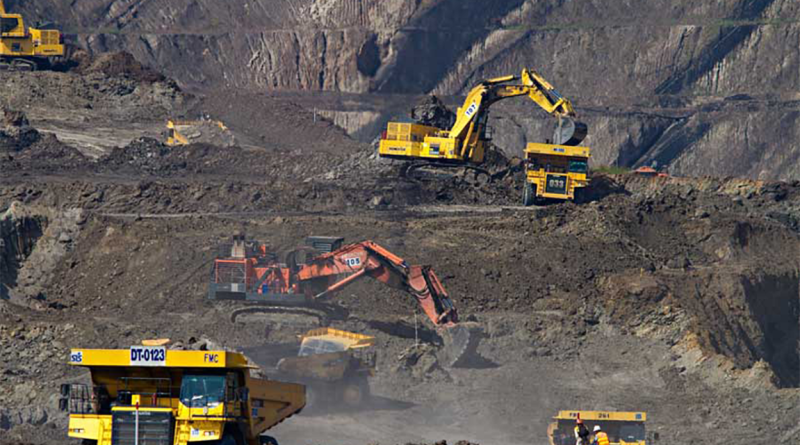Securing Critical Raw Materials for Europe’s Green Energy Future
Europe’s transition to renewable energy has fueled an unprecedented demand for critical raw materials, including lithium, cobalt, and rare earth elements. These materials, essential to the manufacture of technologies like electric vehicles (EVs), batteries, and wind turbines, are largely imported from politically sensitive areas such as China and the Democratic Republic of Congo (DRC). This reliance exposes Europe to supply chain risks, which have intensified as global demand for green technology grows.
In response, Europe is increasingly turning to recycling and circular economy principles to reduce reliance on foreign suppliers. New initiatives like the Critical Raw Materials Act are setting specific targets for sourcing and recycling essential materials domestically. Recycling and reusing materials locally are central to Europe’s strategy to secure the resources necessary for its green energy ambitions, creating a stable supply chain that underpins a sustainable economic future.
The critical role of raw materials in Europe’s green energy transition
As Europe advances its green energy goals, demand for critical materials like lithium, cobalt, and rare earth metals has surged. These materials are integral to producing renewable energy infrastructure—EV batteries, solar panels, and wind turbines—that power the continent’s clean energy transition. However, Europe’s heavy reliance on imports for these raw materials exposes it to both supply chain disruptions and significant environmental costs. Over 90 percent of rare earth elements essential to EVs and wind turbines come from China, while other critical materials are sourced from regions with complex political landscapes, such as the DRC.
To address these vulnerabilities, the Critical Raw Materials Act was enacted in March 2023. This legislation emphasizes increased domestic sourcing, with targets to boost extraction to 10 percent, processing to 40 percent, and recycling to 15 percent by 2030. These measures are expected to reduce Europe’s dependence on international suppliers and lessen exposure to volatile market conditions.
Europe’s recycling landscape and emerging technologies
Europe’s recycling infrastructure for critical raw materials is evolving quickly, though it still requires significant scaling to meet the demands of green technology. Germany and France are leading efforts in recycling, supported by EU-wide initiatives like the Circular Economy Action Plan and Critical Raw Materials Act. However, limited recycling capacity for critical materials like lithium and cobalt presents a challenge as demand for these resources continues to grow.
EU-funded projects like PEACOC are at the forefront of recycling innovation. This project focuses on extracting valuable metals such as gold, platinum, and palladium from electronic waste, using advanced chemical processing methods to reclaim precious resources from complex e-waste streams. Such initiatives represent significant advancements in Europe’s recycling capacity, supporting its goal to establish a stable supply of raw materials essential for renewable energy.
Despite these advancements, technical challenges remain in creating a truly circular recycling system. Many green technology products, including EV batteries and solar panels, are made with composite materials that complicate the recycling process. Additional investment in infrastructure and innovation is required to overcome these obstacles. For instance, traditional recycling facilities are not fully equipped to manage the complex needs of modern green tech waste. To address this, researchers are developing new methods to isolate small quantities of critical metals, even when they are present in low concentrations.
Policy and industry actions driving the circular economy
The EU’s policies, including the Circular Economy Action Plan and the Critical Raw Materials Act, encourage recycling and promote the reuse of materials across industries. These policies not only address Europe’s dependence on imported resources but also support climate change goals by reducing the need for raw material extraction, which has significant environmental impacts.
The industry has responded by increasing investments in recycling technologies and forming partnerships with government bodies and research institutions to expand Europe’s recycling capacity. For instance, automotive and electronics companies are actively exploring ways to recycle materials from EV batteries, solar panels, and electronic devices. Adopting modular product designs that simplify disassembly and recycling allows manufacturers to play a critical role in advancing the circular economy.
This approach not only strengthens Europe’s industrial resilience but also aligns with the EU’s long-term goal of creating a sustainable and independent economy. As companies integrate recycling into their supply chains and product designs, the circular economy model is gradually becoming a central pillar of Europe’s green industrial strategy.
Europe’s path to resource independence and sustainability
The shift to a circular economy has significant implications for Europe’s economic resilience, environmental sustainability, and resource independence. Recycling critical raw materials not only reduces environmental impact but also provides a reliable domestic supply of materials essential for green technologies. The Fraunhofer UMSICHT report reveals that recycling saved approximately 28.8 million tons of raw materials in 2020, including resources like iron ore and crude oil, while preventing millions of tons of greenhouse gas emissions.
Furthermore, Europe’s focus on recycling strengthens its geopolitical position by reducing exposure to market volatility and international supply disruptions. For example, the 2022 spike in palladium prices following the Russia-Ukraine conflict underscored the risk of reliance on external suppliers. By developing a self-sufficient supply chain through recycling, Europe is enhancing its strategic autonomy and reducing vulnerability to global economic shifts.
Looking ahead, continued investment in recycling technologies and circular economy practices will be essential for Europe to reach its 2050 climate targets. Innovations in recycling, such as modular designs for renewable energy products and advanced recycling processes for complex materials, promise to make resource recovery more efficient and sustainable.
Sources:
